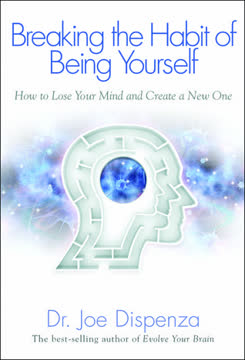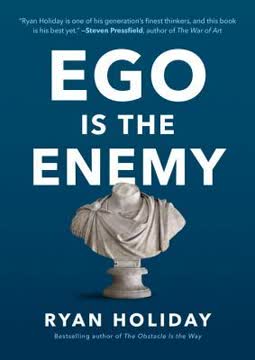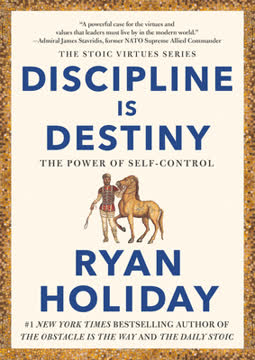Key Takeaways
1. Creativity is a renewable resource that can be cultivated
Ideas aren't cheap—they're free.
Unlocking creative potential. Creativity is an innate human capability that can be enhanced through practice and the right environment. While often overlooked in formal education, creative thinking is a crucial skill for success in all fields. The human brain is wired for innovation, constantly assessing and adapting to changing environments.
Developing creative skills. Creative thinking can be taught and learned through specific tools and techniques. These include:
- Deferring judgment
- Generating multiple ideas
- Encouraging unusual ideas
- Combining ideas
- Practicing lateral thinking
- Exposing oneself to diverse experiences and knowledge
By consciously applying these methods, individuals can tap into their creative genius and generate innovative solutions to complex problems.
2. Reframing problems unlocks innovative solutions
The first question has only one right answer, and the second question has an infinite number of solutions.
Shifting perspectives. Reframing problems involves looking at challenges from different angles, which can dramatically change the range of possible solutions. This skill is crucial for innovation, as it allows us to break free from conventional thinking and explore new possibilities.
Techniques for reframing:
- Ask "why" questions to uncover deeper issues
- Consider the problem from various stakeholders' perspectives
- Change the scale of observation (e.g., close-up vs. big picture)
- Use metaphors and analogies to view the problem differently
- Remove or add constraints to the problem statement
By practicing these techniques, individuals and organizations can overcome mental blocks and discover innovative solutions to seemingly intractable problems.
3. Connecting ideas sparks imagination and innovation
Making connections leads to "aha!" moments, which are remarkably pleasant.
Cross-pollination of ideas. Innovation often stems from connecting seemingly unrelated concepts or objects. This process of combining ideas is a fundamental aspect of creative thinking and can lead to breakthrough innovations.
Strategies for connecting ideas:
- Expose yourself to diverse fields of knowledge
- Practice creating analogies and metaphors
- Use brainstorming techniques to generate multiple ideas
- Engage in interdisciplinary collaborations
- Travel and experience different cultures
The ability to connect disparate ideas is a skill that can be developed through practice. By consciously seeking connections between different domains, individuals can enhance their creative output and generate novel solutions to complex problems.
4. Observation skills fuel creative thinking
Focused observation is a powerful way to acquire valuable knowledge about the world.
Sharpening perception. Keen observation is a critical skill for gaining insights and fueling creativity. By actively engaging with our environment and paying attention to details often overlooked, we can uncover new opportunities for innovation.
Enhancing observation skills:
- Practice mindfulness and present-moment awareness
- Keep a journal to record observations and insights
- Engage in activities that require focused attention (e.g., drawing, photography)
- Ask questions about familiar objects and environments
- Seek out new experiences and perspectives
Developing strong observation skills allows individuals to notice patterns, identify unmet needs, and generate creative solutions based on a deeper understanding of the world around them.
5. Physical spaces profoundly impact creative output
Space is the stage on which we play out our lives.
Designing for innovation. The physical environment in which we work and live has a significant impact on our thoughts, behaviors, and creative output. Thoughtfully designed spaces can enhance collaboration, stimulate imagination, and foster innovation.
Key elements of creative spaces:
- Flexibility and adaptability
- Areas for both collaboration and individual focus
- Visual stimulation (e.g., art, prototypes, nature views)
- Comfortable and varied seating options
- Tools and materials for quick prototyping
- Spaces that encourage movement and interaction
By consciously designing and modifying our physical environments, we can create habitats that nurture creativity and innovation in individuals and teams.
6. Constraints and rules can catalyze creativity
Creativity loves constraints.
Embracing limitations. Contrary to popular belief, constraints and rules can often stimulate creativity rather than hinder it. When faced with limitations, individuals are forced to think more creatively and find innovative solutions within given parameters.
Leveraging constraints:
- Set artificial constraints on projects to spark innovative thinking
- Use time limits to increase focus and urgency
- Impose resource limitations to encourage resourcefulness
- Establish clear guidelines to provide structure for creative exploration
- Challenge assumptions and break conventional rules strategically
By viewing constraints as opportunities rather than obstacles, individuals and organizations can harness their power to drive innovation and creative problem-solving.
7. Team dynamics significantly influence innovative outcomes
Teamwork is incredibly important when you are building organizations that foster innovation.
Fostering collaborative creativity. The composition and dynamics of teams play a crucial role in determining creative output. Diverse teams with complementary skills and effective communication can generate more innovative ideas and solutions than individuals working alone.
Enhancing team creativity:
- Build teams with diverse backgrounds and perspectives
- Establish psychological safety to encourage risk-taking
- Use tools like Edward de Bono's "Six Thinking Hats" to manage different thinking styles
- Encourage playfulness and positive interactions
- Provide opportunities for both individual and group ideation
- Develop skills in active listening and building on others' ideas
By focusing on creating effective team dynamics, organizations can tap into the collective creativity of their members and drive innovation.
8. Experimentation is crucial for breakthrough ideas
There are always solutions.
Embracing trial and error. Experimentation is a fundamental aspect of the creative process, allowing individuals and organizations to test ideas, learn from failures, and refine solutions. A culture that encourages experimentation is more likely to produce breakthrough innovations.
Fostering a culture of experimentation:
- Reframe failures as valuable learning opportunities
- Encourage rapid prototyping and iteration
- Celebrate both successes and instructive failures
- Allocate resources for exploratory projects
- Create safe spaces for testing new ideas
- Use data-driven approaches to evaluate experiments
By adopting an experimental mindset and creating supportive environments for testing ideas, individuals and organizations can increase their capacity for innovation and breakthrough thinking.
9. Attitude and mindset determine creative potential
Whether you think you can or you can't, you're right.
Cultivating a creative mindset. An individual's attitude and beliefs about their own creative abilities significantly impact their potential for innovation. A growth mindset, which views creativity as a skill that can be developed, leads to greater creative output and perseverance in the face of challenges.
Developing a creative attitude:
- Challenge self-limiting beliefs about creativity
- Embrace curiosity and a willingness to learn
- Practice resilience in the face of setbacks
- Cultivate optimism and a solution-oriented approach
- Seek out diverse experiences and perspectives
- Develop comfort with ambiguity and uncertainty
By consciously shaping our attitudes and beliefs about creativity, we can unlock our full creative potential and approach challenges with greater confidence and innovation.
10. The Innovation Engine: Integrating internal and external factors
There are opportunities for creative problem solving everywhere.
Holistic approach to innovation. The Innovation Engine model integrates both internal factors (knowledge, imagination, and attitude) and external factors (resources, habitat, and culture) that influence creativity and innovation. Understanding and optimizing these interconnected elements can significantly enhance creative output.
Key components of the Innovation Engine:
- Internal factors:
- Knowledge: The fuel for imagination
- Imagination: The catalyst for transforming knowledge into new ideas
- Attitude: The spark that sets the Innovation Engine in motion
- External factors:
- Resources: Assets in the community
- Habitat: Local environments (home, school, office)
- Culture: Collective beliefs, values, and behaviors
By recognizing the interplay between these factors and consciously working to optimize each component, individuals and organizations can create powerful ecosystems for sustained innovation and creative problem-solving.
Last updated:
FAQ
What's "inGenius: A Crash Course on Creativity" about?
- Overview: "inGenius: A Crash Course on Creativity" by Tina Seelig is a guide to unlocking and enhancing creativity in individuals and organizations. It provides practical tools and techniques to foster innovation.
- Focus on Creativity: The book emphasizes that creativity is not just an innate talent but a skill that can be developed and nurtured through specific methods and environmental factors.
- Innovation Engine: Seelig introduces the concept of the "Innovation Engine," a model that illustrates how internal and external factors work together to enhance creativity.
- Real-World Examples: The book is filled with stories and examples from various fields, demonstrating how creative thinking leads to breakthrough solutions.
Why should I read "inGenius: A Crash Course on Creativity"?
- Practical Tools: The book offers a concrete set of methods to enhance creativity, making it a valuable resource for anyone looking to innovate in their personal or professional life.
- Broad Applicability: Whether you're in business, education, or the arts, the principles in the book can be applied to a wide range of fields and challenges.
- Inspiration and Motivation: Seelig's engaging writing and real-world examples provide inspiration and motivation to think creatively and embrace innovation.
- Skill Development: Reading the book can help you develop creative competence and confidence, essential skills in today's rapidly changing world.
What are the key takeaways of "inGenius: A Crash Course on Creativity"?
- Creativity is Learnable: Creativity is not a fixed trait but a skill that can be developed through practice and the right environment.
- Innovation Engine: The Innovation Engine model shows how knowledge, imagination, attitude, resources, habitat, and culture interact to foster creativity.
- Reframing Problems: Learning to reframe problems can unlock a vast array of solutions and enhance your imagination.
- Experimentation and Risk: Embracing experimentation and being willing to take risks are crucial for creative problem-solving.
What is the "Innovation Engine" in "inGenius: A Crash Course on Creativity"?
- Model Components: The Innovation Engine consists of six components: knowledge, imagination, attitude, resources, habitat, and culture.
- Internal Factors: Knowledge, imagination, and attitude are internal factors that drive creativity from within.
- External Factors: Resources, habitat, and culture are external factors that influence creativity from the outside.
- Interconnected System: The model illustrates how these components work together to enhance creativity and innovation.
How does Tina Seelig suggest we enhance our creativity?
- Reframe Problems: Seelig emphasizes the importance of reframing problems to see them from different perspectives and unlock new solutions.
- Connect and Combine Ideas: Encourages connecting and combining seemingly unrelated ideas to spark innovation.
- Experiment and Take Risks: Advocates for embracing experimentation and being open to failure as a path to creative breakthroughs.
- Cultivate the Right Environment: Suggests creating environments that support creativity through space design, rules, and incentives.
What are some practical exercises from "inGenius: A Crash Course on Creativity"?
- Name Tag Redesign: An exercise where students redesign name tags to explore the deeper purpose and functionality beyond just displaying a name.
- Birthday Line Exercise: A task where participants line up by birthday without speaking, highlighting the importance of exploring multiple solutions.
- Marshmallow Challenge: A team exercise to build the tallest structure with spaghetti, string, tape, and a marshmallow, emphasizing teamwork and prototyping.
- Trash-Can Challenge: Participants create value from the contents of a trash can, encouraging resourcefulness and redefining value.
What role does "attitude" play in the Innovation Engine?
- Spark for Creativity: Attitude acts as the spark that initiates the creative process, influencing how you approach challenges and opportunities.
- Growth Mindset: A positive attitude, or growth mindset, encourages learning from mistakes and viewing failures as opportunities for growth.
- Influence on Culture: Individual attitudes collectively shape the culture of an organization or community, impacting overall creativity.
- Self-Perception: How you perceive your creative abilities can significantly affect your willingness to engage in creative activities.
How does "inGenius: A Crash Course on Creativity" address the concept of failure?
- Failure as Data: Seelig encourages viewing failures as valuable data that provide insights and guide future experiments.
- Experimentation Mindset: Emphasizes the importance of an experimentation mindset, where unexpected results are seen as learning opportunities.
- Risk-Taking: Advocates for taking calculated risks and being open to failure as a necessary part of the creative process.
- Cultural Support: Suggests creating a culture that supports experimentation and does not penalize failure, fostering an environment where creativity can thrive.
What are some of the best quotes from "inGenius: A Crash Course on Creativity" and what do they mean?
- "Ideas aren’t cheap at all—they’re free." This quote challenges the notion that ideas are easy to come by, emphasizing their value and potential to drive innovation.
- "The best way to predict the future is to invent it." Echoing Alan Kay, this quote underscores the power of creativity in shaping the future.
- "Creativity is an endless renewable resource." Highlights the limitless potential of human imagination and the ability to continually generate new ideas.
- "If anything can go wrong, fix it!" A call to action to proactively address challenges and obstacles, fostering a problem-solving mindset.
How does "inGenius: A Crash Course on Creativity" suggest we use space to enhance creativity?
- Flexible Environments: Encourages designing spaces that are flexible and can be easily reconfigured to support different types of creative work.
- Stimulating Surroundings: Suggests filling spaces with objects and materials that inspire and stimulate the imagination.
- Open and Collaborative: Advocates for open spaces that facilitate collaboration and spontaneous interactions among team members.
- Reflective of Goals: Recommends designing spaces that reflect the goals and values of the organization, reinforcing the desired creative culture.
How does "inGenius: A Crash Course on Creativity" relate to education?
- Creativity in Education: Seelig argues for incorporating creative thinking into education, making it a core part of learning from an early age.
- Experiential Learning: Promotes hands-on, experiential learning that encourages students to experiment and explore rather than just memorize facts.
- Teamwork and Collaboration: Emphasizes the importance of teaching students to work effectively in teams, preparing them for collaborative problem-solving.
- Reframing Challenges: Encourages educators to teach students how to reframe challenges and approach problems from multiple perspectives.
What impact does "inGenius: A Crash Course on Creativity" aim to have on its readers?
- Empowerment: Aims to empower readers to unlock their creative potential and apply it to solve real-world problems.
- Practical Application: Provides practical tools and techniques that readers can immediately apply in their personal and professional lives.
- Cultural Shift: Seeks to inspire a cultural shift towards valuing and nurturing creativity in all areas of life.
- Inspiration: Aspires to inspire readers to view challenges as opportunities and to approach them with a creative and open mindset.
Review Summary
inGenius: A Crash Course on Creativity receives mixed reviews. Many readers find it useful for fostering creativity, praising its examples and practical tips. However, some criticize it for lacking originality and being too focused on group creativity. The book's "Innovation Engine" model and emphasis on reframing problems are highlighted positively. Critics note that the content may be familiar to those well-versed in creativity literature. Overall, it's seen as a good introduction to creativity concepts, particularly for entrepreneurs and students, though some find it lacking in depth and applicability.
Similar Books










Download PDF
Download EPUB
.epub digital book format is ideal for reading ebooks on phones, tablets, and e-readers.







